Mexico City, Love in the Ruins, the Sacred and the Profane
Growing up in Texas, we used to go to Mexico every year, not the places people go now, Oaxaca, Chiapas, or Mexico City. We vacationed in Matamoros, went for day trips to Nuevo Progreso, or Ciudad Juárez, where the murders took place in Roberto Bolaño’s majestic 2666. Still, I learned a lot living in a state with basically an open border and shared history. On one occasion in Tijuana, a stripper tried to steal my wallet. I grabbed her hand, retrieving it, a personal triumph for me. On another, we got lost on the way to Guanajuato, finding ourselves in New Orleans, another former colonial outpost seemingly lost in time. And walked through the pre-Columbian city of Chichén Itzá, of the Maya people in the Yucatan peninsula, after swimming in the bluest waters in Isla Mujeres, walking through a cemetery there, wondering about the civilizations that had come before us. I still remember walking through Nuevo Progreso during spring break my senior year in high school, seeing some kids kicking a soccer ball in a desolate empty street, on the Rio Grande border, wondering about those kids, and our strange sense of this place, just over a bridge from Padre Island, a chasm dividing our lives and histories.
“It was like love in the ruins,” said my friend Robin, referring to the novel we were reading at the time.
More questions every trip, trying to understand this complicated geography and our mutual history.
“Madness is really contagious,” says Roberto Bolaño in 2666. “And friends are a blessing.”
Still, we have not always treated our Southern neighbors as friends or even good neighbors, as Roosevelt imagined we could in 1933, less than a century after the Mexican American War of 1846-48.
I only knew about Mexico City from the movies, from reading the Death of Artemio Cruz on a train from Rome to Florence in the summer of 1991. Carlos Fuentes, who helped give the world Garcia Márquez, writes:
“You will be that child who goes out to the earth, finds the earth, leaves his origin, finds his destiny, today when death equals origin and destiny and between the two, despite everything, drives the edge of freedom.”
For Fuentes, Mexico City was a place of divided selves, old world and new, rich and poor, pre-colonial and post, pieces of history, one civilization on top of the next, police, smog, bribery and drug cartels, inequalities and the lawless that Bolaño traced in 2666.
The inequalities expanded with a fury, especially after NAFTA.
In Planet of Slums, Mike Davis writes: “In Mexico the percentage of the population living in extreme poverty increased from 16 percent in 1992 to 38 percent in 1999, despite the much-hyped ‘success stories’ of the border maquiladoras and NAFTA.’ (164-165)
The border became more and more contested, more and more violent. We could see it driving down from Texas with my Dad especially after NAFTA. The Cartels intensified as our war on drugs only escalated, and guns became more readily available.
And that was before a reality TV actor turned politician from Queens, New York ran for president on a campaign of demonizing our neighbors, as “'Drug dealers, criminals, rapists'”. And unleashed a policy of “family separations,” at the US Mexico border, as cruel a policy as many had seen in our lifetimes.
And gradually, a massive border, that for years, was little but a pause along a road trip, became a sort of wall. Says Elena Poniatowska: “It's an open sore that refuses to heal, a suppurating wound that splits two nations and two cultures,” (viii). While the rest of the world wanted to tear down walls, we had a president and party which wanted to erect one. Despite the conflicts and panics, we shared 3,145 kilometers (1954 miles) of border, an electric grid and history, as well as unending contestation between the center and “the other”. Still most who those who live along it understand the dividing line to be an arbitrary demarcation, that still manages to separate world views. This is a place for both old gods and new, pre recorded time and a historic past, pre Christian religions and conquest.
Anthropologist Mercia Eliade, frames this as a conflict between mythic and historic time, the sacred and the profane. Writing in 2018, Christopher Montoya says: “Forget, for the moment, that the U.S.-Mexico border is a geographical or a political boundary. Instead, imagine the border as a site where ideological tectonic plates are constantly grinding against one another. Think of it as a contested space between two abstractions: the Sacred and the Profane. Think of it as space that is simultaneously familiar and foreign. Mircea Eliade informs us that “...space is not homogeneous… some parts of space are qualitatively different from others.” Some parts of “space” are deemed Sacred and other parts are thought of as Profane…. The Sacred… is a space that is “our space” or “our world.” Religious man thinks of “his world” as the “center of the world” (29, 22). The Sacred is the realm that lives in constant opposition to chaos. The Sacred is the realm of order. It is the realm of law (including immigration law). To a state actor who enforces immigration law on the border, it is known simply as “law and order.” However... some claim that “law and order” in the borderlands is being overtly transgressed. The Profane, on the other hand, is “everything outside . . . a foreign, chaotic space peopled by ghosts, demons, ‘foreigners’ (who are assimilated to demons and the souls of the dead)” (29). It is also the “unknown . . . a sort of ‘other world’ ” and one “unoccupied by our people” (29, 31). The Profane is the realm of chaos that exists to oppose order. To a border enforcer, it represents “chaotic space” that threatens “our world” by invading us. When lawbreakers (including migrants) and drugs cross that barrier, it symbolizes “the retrogression of the cosmos [order] into chaos” (79).”
The conflict has been with us for a long time. We see it between Pakistan and India, Northern Ireland and England, between North and South, inside and outside.
The day before we arrived Claudia Sheinbaum was inaugurated as the first female president of Mexico. “Lucía Ruíz, a 42-year-old mother of three, was one of thousands trying to reach the main square to see the rally. She said she hopes Sheinbaum will be able to combat high rates of violence against women in the country.”
Many we spoke with were suspicious of her.
After all, it's been generations of promises, promises. The Institutional Revolutionary Party, the PRI, enjoyed one party rule for much of the 20th century. “In Mexico, politicians have been, with few exceptions, a public disgrace,” writes Guillermo Fadanelli in Prayers of a Tenant (Narrative) “their most important concern is to obtain benefits for themselves at the expense of the common good. They profit from the misfortunes of their community in order to strengthen or impose their image for electoral purposes.”
Witnessing these dynamics, repeating themselves over and over again, many ran as far as they could from the place. Octavio Paz left the country after the Tlatelolco Massacre in 1968. Estranged in the US, Paz reflected on what it meant to be Mexican. “There were many perspectives …. Mexico was not only an ever changing and complex country, but there were also different ways to look at it” he thought, looking around at his new home. “America dreams itself in Whitman because it was itself a dream, pure creation,” he wrote. “Before and since Whitman, we had other poetic dreams. All of them are like attempts to escape from the American nightmare” (1986, p. 12). But can we look at ourselves, as we look outward?
The same year as the Tlatelolco Massacre, a young writer named Roberto Bolaño moved to Mexico City and participated in street demonstrations. For Bolaño Mexico City was, “a vast, almost imaginary place where freedom and metamorphosis were a daily spectacle.” Caught in a whirl of revolutionary “black humor, friendship…and the danger of death”, Bolaño left for Chile and, says Daniel Zalewski, “returned to Mexico City in 1974. At a café on Calle Bucareli—Mexico City’s Left Bank—[and] formed a band of literary guerrillas, christened the infrarealistas. The group’s aesthetic, Bolaño later said, was French Surrealism fused with “Dadaism, Mexican style.” They published iconoclastic magazines and engaged in myriad forms of provocation, such as shouting out their own poems at readings given by their “enemies” in Latin America’s cultural establishment—in particular, Octavio Paz…” Bolaño would stay for the next three years, publishing two poetry collections, before lost love sent him on his own exile in 1977. “If I had stayed in Mexico I would have hanged myself,” he confessed.
We wanted to just see these streets, where murals are fabled to scream with color, pranks and poems seem to fly from street corners. We arrived late in the night, just a few days after getting back from New Orleans. Music pumped from a club, a few fashion models walking down the street from our hotel. Looking out at it all from our patio, I tried to take it all in. The next day, we walked out for a stroll in the Roma district into a Mexico City morning. Vines were hanging from a tree down the street from our hotel, roots emerging from cracked sidewalks outside. We walked inside a small cafe called La Prosperidad. Local art hanging, with a second floor view of the street, the cafe felt like a scene from a Garcia Márquez novel. We enjoyed fresh orange juice and eggs.
Off to a good start, we strolled through Plaza Villa de Madrid, a traffic circle lined with cafes, people sitting about; Oaxaca, Durango, Medellín, and El Oro Streets intersect, the statue of Fuente de Cabeles in the middle. On we walk, past the old buildings and new, colonial and modern, past a bus stop, to a market, through food vendors, past the Monument to the Revolution, to the Museo Mural Diego Rivera Museum where Diego Rivera's 1946–47 mural Sueño de una Tarde Dominical en la Alameda Central is located. A synthesis of the history of Mexico from Cortez to Zapatista, from the Inquisition to the Spanish Conquest, this monument invites us to reflect on the past and present, forming a collective story, built of countless narratives, a drunken soldier dreaming of revolution, nuns with their own ideas about the world, subversive poets such as Sor Juanita de la Cruz, an elder with her head in her knees, recalling an affair with an American, a jew burned during the inquisition, the artist himself as a small boy holding hands with death, in the middle; behind him stands the boy’s future wife, Frida Kahlo, whose childhood home we visited next.
Before the Casa Azul, we stopped for tacos on corn tortillas, sitting on the sidewalk, taking it all in. And made our way to Frida’s blue house in Coyoacan. Today it's the world's, a mirror to aesthetic wanderlust, images of her likeness, like Warhol soup cans in museum shops the world over. It is also a very real meditation on the nature of bodies and suffering. When she lost her foot to amputation, she quipped, "Who needs feet. I've got wings to fly." She died on the 13th of July 1954 at the age of 47. The official cause of death pulmonary embolism, although some suggest she overdosed on painkillers. Looking at the pictures, her convalescing spaces, her books, at the flowers outside her childhood bedroom, the casts she painted with flowers and the communist logos, her self portraits, her philandering husband and affair with Trotsky, recalling first learning about her as a college kid, looking at the postcards of her in a Santa Monica flea market decades prior, I found myself moved, thinking of her meditations a strange world, where our bodies break along with our hearts, suffering any number of horrors.
Finishing our visit, we walked over to the home of her friend, the wayward Russian Revolutionary, Leon Trotsky, who spent his final days in exile here. He wanted something different, less orthodox of a revolution, beyond the authoritarian model he saw coming from Stalin. For this bout of free thinking, he was murdered by hired assassin with a pickaxe, at his desk in Coyoacán, on the 20th of August, 1940.
And gradually, we made it back, navigating the traffic to our neighborhood, where we sat in a cafe outside in Plaza Villa de Madrid, enjoying a few more tacos, chatting, attempting to make sense of what we’d seen of this city. It still feels like a mystery, a pre Christian past as well as a cosmopolitan hub, a colonial outpost and a modern metropolis, artists and revolutionaries rubbing shoulders, each contending with another part of itself, street food and people out everywhere in a thriving cafe society. Looking around, I take in pieces, scenes I’ve seen in movies, ruins of Mayan, Aztec, Spanish Colonial, revolutionary, and modern modern civilizations - one after the other, on top of the next.
The following morning, we zip across town, looking at the workers in their blue, green and orange wears, sweeping the street, opening their shops. And our car stops near the National Palace. It's closed, says the police. A woman is peeling potatoes by us, cooking them on the spot, near a man warming and chopping up meat for lunch. We park for street food, plátanos and bottles of Coke with the purest sugar, each taco and corn tortilla surpassing the next, the closed National Palace in the distance, trying to hatch a plan. After three tacos, we wander about the immense Zócalo cdmx, home of revolution and protest, into the Metropolitan Cathedral made from the pyramids, stopping to explore the Templo Mayor, the main temple among the Aztec pyramids in the city of Tenochtitlan, now Mexico City, a model of the Postclassic period of Mesoamerica, that the Spanish demolished.
There we meet Martin, an archaeologist turned tour guide, who tells us about the place, for a small fee, of course. We talk about the trade routes between indigenous people here and up north, the nomads who moved from the border that would be the US. They stopped upon a lake around 1325 CE, at Xochimilco, where we stand. They witness an Eagle eating a snake, a war between the Sun and Moon, night and day, a lost port that would become an Aztec city. And they built the pyramids that remained until another civilization came along, demolished at the hands of the Spanish, their ruins where we’re standing.
Martin looks at us. Tens of tens of thousands of rare manuscripts, made of cactus and deerskin, were burned here at the hands of the civilized Spanish people who came, he tells us with a bit of irony in his voice. The Archaeology Museum has 2000 of the remaining manuscripts, says Martin. Mexico has 74 ethnic groups. Cortez wrote to King Carlos when he got here in 1519, telling him about the 19 pyramids he found there, describing the Aztec civilization.
What happened to the civilizations which came before, we ask.
The Maya exhausted their natural resources, their civilization crumbling before the Spanish arrived.
The Teotihuacan people died off around 700 in our common era. The Aztecs came 700 years later and gave them this name, as the place of the gods and started to copy their ceremonial design.
What about the Aztecs?
What about them?
What happened to them?
Look around you, look at me, we’re still here. The Mexican people are the result of this history, half Aztec, half Spanish.
“Our awareness of a city comes in fragmentary chance encounters and… dismembered Coyolxauhqui ,” writes Nick Caister (2000, p. 40), referring to his Mexico City and an Aztec goddess there. Looking around at the ruins, my imagination spins back to Rome, Athens, past civilizations, whose history flows into an ever flowing present into the majestic cities of history, empires crumbling, time and time again.
Martin smiles and tells us a story. When US general Winfield Scott took Mexico City in 1847, they asked if he was going to become governor. He replied that he had talked with his president, President Polk, who told him he didn’t want the burden of killing the 16 million parasites, the Mexicans who were already there. The Spanish respected the 74 ethnic groups who were there.
We walked through the ruins of what had been pyramids. This is the view that Cortes saw, Martin tells us. Cortez built La Nueva Espana on an older city, a floating city, connected by canals. Cortez wanted to save the historic center. The Spanish destroyed the pyramids the Aztecs created in the 1600’s after Cortez died.
On the 21st of February 1978, an electric company came to fix the cables below. One of the employees came to dig and found the Moon Goddess. Ten days afterward, the Mexican president realized the importance of the finding. The first phase of the Temple Project began, lasting from 1978 to ‘82, the second, ‘83 to now, exploring the history of civilizations that came before the two collapses, in the 7th and 12th centuries.
It's getting hot, so we make plans for a tour of the Archaeology Museum the next day.
After a coffee break, our next stop is the Museo Vivo del Muralismo, Mexico City’s Secretaría de Educación Pública (SEP)—the federal government building that houses the Ministry of Public Education, with three floors of over 100 murals, many by Diego Rivera from the early 1920s. Mural after mural, we walk slowly, through a mesmerizing story about capitalism and workers and commodities, peasants and hunger, history and social change. The murals’ subject, revolutionary change in Mexico. “Rivera later wrote ‘It was my desire to reproduce the pure, basic images of my land. I wanted my paintings to reflect the social life of Mexico as I saw it, and through my vision of the truth to show the masses the outline of the future.’”
Finishing, we catch a pedicab through the Central to the majestic Museo Nacional de Arte, MUNAL, a neoclassical gem at No. 8 Tacuba, to explore the works of Mexican Artists, many influenced by Weimar era arts movements, taking in the poetry to Revolutionary German List Arzubide, who lived 100 years, and Tina Modotti, the Italian American photographer, model, actor, and revolutionary who left her Italy in 1913 for the United States. She moved between San Francisco and Mexico City, finding a home as an artist here. Caroline tells me about her as we toured the show, “Germán List Arzubide. Life is in the letters , …. the story of an avant-garde figure, a reference for the cultural life of the 20th century in Mexico….” Walking about the museum security guard us, pointing the foot traffic, meandering about, exploring the lives of Mexican artists, many we’d never known.
Outside the museum, kids are sitting about the square, smoking cigarettes, beneath an equestrian statue of Charles IV of Spain (known as El Caballito). We stop for a margarita, taking in the scene, before walking through the art deco streets, past coffee shops and old diners, stopping for dinner at La Casa de Las Sirenas, a majestic restaurant with a second floor view, overlooking the square and ruins we'd seen below. Corn tortillas and black bean soup, made with coriander and olive oil and chorizo, are the final delicious pieces of a full day, immersed in the richness of a city and its kind hosts.
Day three begins with a long journey from the Sabato Market in the San Angelo neighborhood, by San Jacinto Market, near Diego Rivera's old studio. We stopped at a Spanish monastery from the 16th century. And take in the artists’ wares, walking through the plush cobblestone streets, lined with trees, through the market with all its treasures. And rush to the Archaeology Museum to meet Martin, for an afternoon exploring Aztec and Maya artifacts. Designed by Pedro Ramírez Vázquez in 1964, the museum is considered one of the greats in the entire world. Walking inside the courtyard inside the museum the first thing one sees is the Umbrella, a vast sculpture/ fountain in the midst of a courtyard, surrounded by galleries. Says John Paul Sonard, “The Umbrella, “gathers together the remnants of an entire civilisation, or rather sequence of civilisations – from the remotest period of the Olmecs, dating back to the second millennium BC, up to the Aztec empire and its brutal terminus after the arrival of the Spanish in the early 16th century.”
Speaking in poetic terms, Martin tells us about the piece, as a series of symbols, water pouring from it, the sun vs moon, day vs night, a sword that symbolizes the Spanish conquest, a crocodile moving about a universe, divided between an underworld and heavens, a ceiba tree, with roots through time, an Eagle and a snake about it, a union between Spain and Mexico.
We’ll spend most of the afternoon walking about the Maya relics, looking for clues into this civilization with roots dating back to 2500 years before the common era, another 1200 years into our era, extending from Guatemala and Nicaragua up to Mexico. We stroll about the museum, and its replicas of forest temples, overlapping within an experience of a modern metropolis. Says Baby C, "You see this monastery from the 16th century, pre US, then you walk across the street to this bustling market, up the street of hidden houses, streets full of cobble stones, lush trees, houses hidden walls not protected from assassin bullets... " Ask Leon Trotsky, who perished here.
Walking about these streets with trees wreaking chaos on the sidewalks, I think about the artists who moved here, the outsiders, the migrant workers, the poets, tracing the novels I’ve read the last few years, particularly Roberto Bolaño and his stories about Mexico. Says the New York Times, his novel “The Savage Detectives” was published in 1998, but its heart belongs to the Mexico City of the mid-1970s, when Bolaño was an avant-garde poet bristling with mad agendas. Like much of his work, the novel is craftily autobiographical. [He’s] been asked to join a gang of literary guerrillas who have named themselves the “visceral realists.”
We end the day meeting our Berlin buddy, Magaly, whose work was part our show last year, at Restaurant Sonia Oxford 23, Juárez, Cuauhtémoc, enjoying some ceviche, chatting about Mexico City and Berlin, women and art, competing gods, Liliana's Invincible Summer by Garza, Elena Gorro, Octavio Paz's wife, the new president and Bolaño.
Our last day, we wake up on a rainy morning and make our way to the Pyramid of the Sun, the largest site in Teotihuacán, dubbed the city of the gods by the Aztec people. Only gods could have constructed such a place, they thought. We spend the morning exploring this ancient city of pyramids and pre-Columbian civilizations, and it's the Avenue of the Dead, the Pyramid of the Moon and the Temple of the Feathered Serpent, the sun ever dueling with the moon, day vs night, tracing a poetry of a cosmos, between a god of water, both male and female, water in the Earth and the sky, a father snake, god of the universe. Teotihuacán offers a glimpse of a world that disappeared, says our guide. No one really knows why the people who created it vanished. The Aztecs found the remains. We can speculate that the civilization ended because they exhausted all the region's resources. Or that the climate changed or a fire forced people to migrate elsewhere? Others speculate that a civil war left the civilization of 200,000 ravaged. Those remaining had to move or kill each other off.
“The center of the city burned around 600 CE,” says my high school buddy Ed, of the Maya Exploration Center. “Perhaps attack, but I lean towards internal rebellion. Mostly the rich homes were burned.”
Either climate change, the exhaustion of natural resources or civil war, Baby C suggests a lesson of the Teotihuacan people is if we are not living in harmony with our natural environment or those around us, we are doomed to perish.
Back in town, we walk through a market, looking at more paintings. An elderly man stops to talk with us. We told him how much we enjoyed seeing his city. 'It's a terrible city,' he laments. I feel the same way about my home town, I try to sympathize. Where he asked. NYC. He says he loves it, visiting it ten times.
Walking back to our hotel, I keep on thinking of the piece I saw the day before in the Archaeology Museum, a replica of the Temple of Murals from Bonampak, Chiapas. In it, a Maya general is seen celebrating vanquished foes, with their fingernails removed, bloodletting. I think of how many cultures have done this. The British were happy to engage in this practice with Irish independence activists. I'm sure there are more. Humans can be cruel. The examples can be traced through a long cruel cavalcade of human history.
We can do great things. We see them here in Mexico City, the goth kids in the streets here, the artists, the peace activists, the novelists. I also think of the animosities, the scapegoating of 'others' along our border, the civil war that consumed the Teotihuacan people, the Maya depleting their resources, the Spanish burning manuscripts, inquisitions that follow. Looking about you see the descendents of Aztecs and the Spanish.
“We Mexicans are not tall people,” says one tour guide with a chuckle.
‘I’m reading the dead Mexican poets, my future colleagues,’” writes Bolaño in his semi autobiographical novel Savage Detectives. Walking these streets, it feels as if we’ve met a few.
Near the hotel, we sit on the second floor of a cafe with a big window overlooking, Plaza Villa de Madrid. I find myself thinking of all the Americans, who came here, their stories of the road, that found their ways into old novels.
“I’m merely exploring souls & cities
That’s enough, isnt it?”
writes Jack Kerouac in Mexico City Blues.
I guess we all are, I think, writing in my journal. We sit, taking in the scene, a few kids next to us with their extended families, cheering for an American football game on the tv, people below. One man is singing “Another Brick in the Wall” by Pink Floyd. The woman by us giggles. A woman in pink hair is crossing the street. A family is enjoying a meal together. And we look at the city, seemingly looking back at us, reminding us to look inside at the treachery of our own empire as Octavio Paz begged us to do a half century prior. And then I chuckle and think of the “visceral realists” out to even the score, Bolaño interrupting the poetry readings of Octavio Paz, the establishment poet they disdained. I think about the German List Arzubide, and his 100 years, and Tina Modotti and her love of this city, and Frida and her affair with Trotsky. We have another beer and look out at the wide open plaza, with scooters and bikes and buses and people stopping and singing and kids meeting up for a cigarette, gossiping about it all.
And we make our way back to New York.
References
Davis, M. (2007). Planet of slums. London Verso
Eliade, M. (1961). The sacred and the profane: the nature of religion; Chicago: University of Chicago Press
Kerouac, J. 1969. Mexico City Blues. Grove, New York.
Montoya (2018). https://bulletin.hds.harvard.edu/between-the-sacred-and-the-profane-the-border-as-a-contested-space/
Paz, Octavio. 1986. On Poets and Others. Arcade Publishing, New York.
Poniatowska. 2000. “Forward.” Mexico City: A Cultural and Literary Companion. By Nick Caisor. Cities of the Imagination, Interlink books.
Schillinger, L. 2019. Revisiting Roberto Bolaño, ‘the Visceral Realist’ New York Times. 1 February.https://www.nytimes.com/2019/02/01/books/review/roberto-bolano-savage-detectives.html
Wolfenzon, C. (2021). Carlos Fuentes and Mexico City. In: Tambling, J. (eds) The Palgrave Encyclopedia of Urban Literary Studies. Palgrave Macmillan, Cham. https://doi.org/10.1007/978-3-319-62592-8_246-1
Zalewski, Daniel. 2007. A Critic at Large: Vagabonds. The New Yorker. March 19. https://www.newyorker.com/magazine/2007/03/26/vagabonds

























































































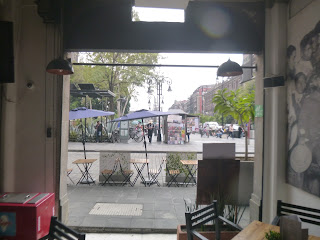















































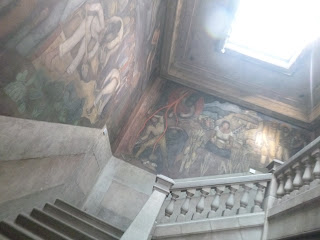

















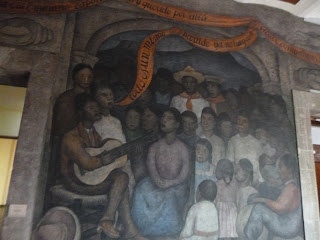

















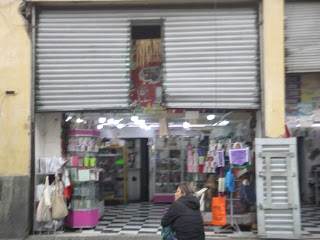






























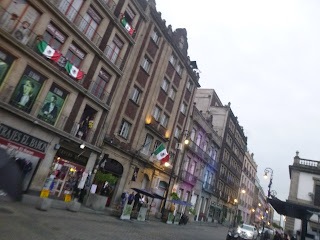
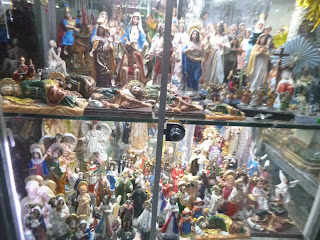







































































No comments:
Post a Comment